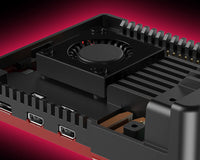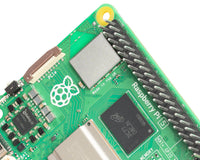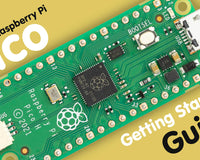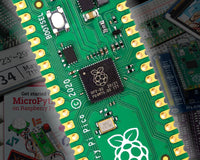
Raspberry Pi Roundup - a new issue of The MagPi, a Twitter snow globe and a way to use a Zero's GPIO from your PC
MagPi - Electronics

The new issue of The MagPi (number 64) seeks to be an electronics starter guide with explanation of the normal components and some simple projects to get you going. They even recommend the CamJam EduKits as a great way to get hold of the components, which is lovely, thanks folks! Also in the issue is a long tutorial on creating text adventures and a feature on the new Google AIY Projects: Vision kit which you can also read here.
You can order a print copy of issue 64 from Raspberry Pi Press.
Snow Globe

Every year, Spencer Organ tries to make something Christmassy to make his house more festive, and to show off at various events he attends. This year, he 3D-printed a plastic house and placed it inside a snow globe bell jar. Beneath the house, he added a Raspberry Pi Zero W with a Pimoroni Automation pHAT and Unicorn pHAT. He soldered everything up and then did some programming to connect the project to Twitter, allowing him to specify keywords to achieve different effects inside the house. You can read more from Spencer here, including how to build your own.
Zero to Hero

Gordon Hollingworth, over at Raspberry Pi, has just blogged an exciting new development that means you can now use a Raspberry Pi Zero’s GPIO pins from your PC or Mac. You’ll need to install Raspbian x86 Stretch on the non-Zero machine first. Now it looks like you don’t need an SD card in the Zero (which is cool), but the post on RPF doesn’t say that explicitly, but it doesmention something about network boot, so try it without!
Install a new bit of software on the x86 machine to detect the Zero…
sudo apt install usbbootgui
Then, plug in your Zero using a USB cable (into the Zero’s USB data port rather than the power port) and the new GUI should pop up to tell you you’ve done it. You can then communicate with that Pi Zero using Scratch 2 GPIO or Python.





